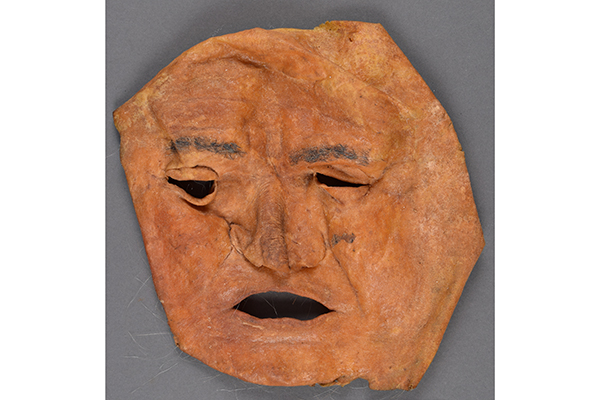The iconic Leatherface mask from the horror movie “The Texas Chain Saw Massacre” has been preserved by the Harry Ransom Center and is available for patrons to view.
The mask was donated by the director, writer and producer of the film, Tobe Hooper, and went on display at the Ransom Center last year. Jennifer Tisdale, director of public affairs for the Ransom Center, said in an email that any patron of the Center may view the mask. Students can become a patron by filling out a short form online or at the Center.
The Leatherface mask is important to preserve because of “Texas Chain Saw’s” place as one of the “best American horror films of all time,” said Kendall Phillips, author of the book “Projected Fears: Horror Films and American Culture” and an expert in the horror genre.
“It gives us an insight not only into the film but the process that people went through to make that film, which casts a tremendously important light on the process through which American culture is made,” said Phillips, a communication and rhetorical studies professor at Syracuse University.
Radio-television-film freshman Brayden Read said preserving the mask is invaluable to horror fans.
“From a fan’s perspective, it’s something that I love,” Read said. “Just being in the same room as the mask that Gunnar Hansen wore in one of my favorite movies — it just seems cool.”
“Texas Chain Saw” was filmed in Round Rock, and Hooper is from Austin, which gives the film a strong tie to traditional Texan values, Phillips said.
“Many of us in Texas grew up in rural areas where the nearest neighbor was miles away,” Phillips said. “You needed to be self-sufficient, you didn’t rely on other people, you guarded your privacy, and that’s the Leatherface family.”
“Texas Chain Saw” was released in 1974. Phillips said various “unsettling” events around that time, such as the Watergate scandal, Vietnam War and civil rights movement pushed horror to have a resurgence.
“When we feel unsettled, we often find ourselves going to the movies to watch unsettling stories,” Phillips said.
Phillips said today, just like in the ‘70s, “we are in a moment where mainstream studios and creative, thoughtful directors are returning to horror.”
Recent examples of horror’s success in theaters are “Get Out,” the 2018 remake of “Suspiria” and the box-office smash hit “Us,” Read said.
“Horror can be such a powerful tool when it comes to social commentary … because horror creates such strong reactions,” Read said.





















